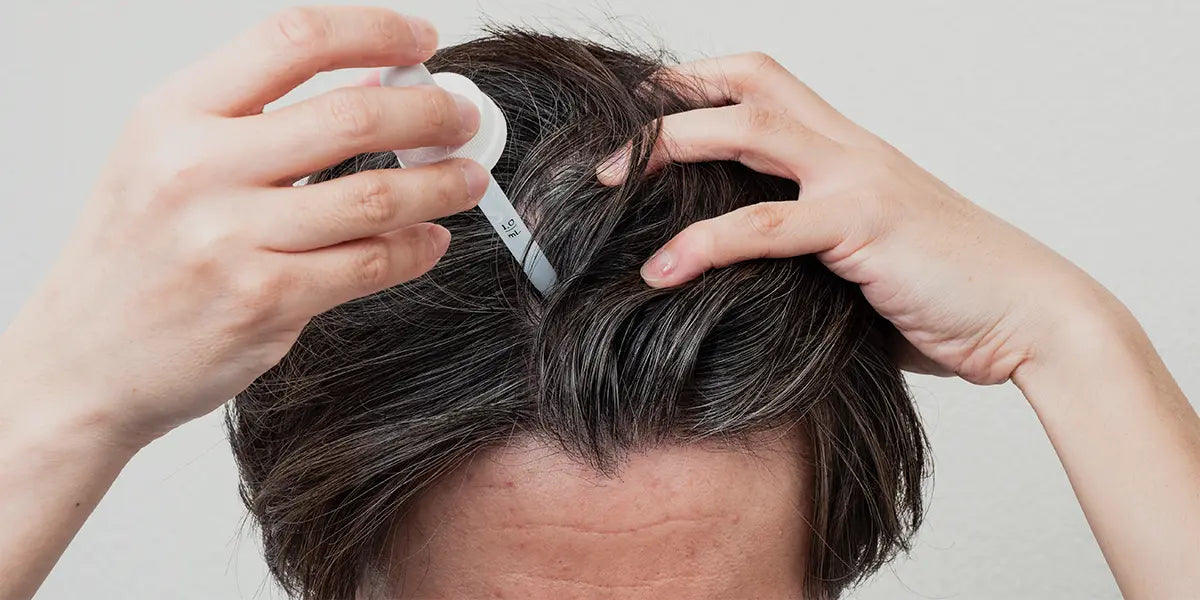Spironolactone is a medication used to treat variety of health conditions. It was originally developed and approved for the treatment of high blood pressure but can be prescribed off-label to help with hair loss and other dermatological concerns like hirsutism (excess body hair growth) and adult acne. It’s an example of a medication called an anti-androgen, which means that it blocks the effects of male sex steroid hormones like testosterone and dihydrotestosterone (DHT). In some people, high levels of DHT are one of the triggers of pattern hair loss.
In this article, we’ll review how spironolactone works for hair loss, who can use it, how long it could take to see results, whether it’s effective and some general dosing information. If you’re curious about whether spironolactone is right for you, we recommend that you consult with a doctor.
How does spironolactone work for hair loss?
Spironolactone is an anti-androgen. It treats hair loss by minimizing the hormonal effects of DHT. In susceptible men and women, DHT causes pattern hair loss by initiating a process called follicular miniaturization. Over time, follicular miniaturization shrinks hair follicles to the point where they are unable to produce healthy hair. For this process to occur, DHT needs to physically connect to its binding site on hair follicles.
Spironolactone works by binding to these receptor sites before DHT can, blocking DHT’s access to them. This prevents the hormone from exerting its effects. Spironolactone may also affect androgen production, reducing the amount of testosterone (and therefore, DHT) that the body makes. For people who are susceptible to balding or thinning hair, this decrease in DHT concentration plays an important part in stopping the progression of hair loss.
XYON currently offers oral spironolactone for women. Start an online consultation today to find out whether this treatment could work for you.
Can I use spironolactone for hair loss?
Spironolactone may not be right for everyone. Because of its anti-androgen effects, spironolactone is not typically prescribed to men, as the medication can have feminizing effects.
This medication should also not be used by women who are pregnant, nursing, or trying to become pregnant. Although the safety of spironolactone during pregnancy hasn’t been formally studied in humans, data from animal studies have shown that there is the potential for developmental harm. Female patients of childbearing potential may still be prescribed spironolactone if they’ve discussed the risks and benefits of the medication with their doctor and the appropriate precautions (e.g., using effective contraception) are taken.
You can learn more about the side effects and risks of using spironolactone for hair loss by visiting this article on spironolactone side effects.
Spironolactone for hair loss: Is it effective?
Evidence for spironolactone’s efficacy in treating hair loss comes from a number of small scale and case studies. This data suggests that spironolactone can be an effective treatment, particularly for women.
An early study conducted in 2005 found that 88% of female patients taking an oral anti-androgen such as spironolactone experienced either stabilization or improvements in hair loss (Sinclair and Jolley, 2005). These findings were further strengthened by the results of a 2015 study which found that 74.3% of participants taking spironolactone saw no further progression of hair loss or improvement (Famenini et al., 2015). It’s theorized that spironolactone may be especially beneficial in women with hyperandrogenism (higher than normal levels of androgen hormones) and pattern hair loss.
A cumulative review of spironolactone studies found the efficacy of the oral medication to be 81%, defined as an improvement in hair growth based on photographic assessment. Most of the patients included in the review were receiving doses of spironolactone ranging from 80-110 mg (Wang et al., 2023).
How long does spironolactone take to work for hair loss?
Most hair loss treatments need to be taken consistently for some time before visible results can be seen. In the case of spironolactone, it’s not unusual to be on treatment for 6-12 months (or longer) before you start to see noticeable improvements.
How to take spironolactone for hair loss
With any medication, it’s important to follow the dosing instructions provided to you by your doctor. The most commonly available form of spironolactone is a pill. In general, you’ll want to aim to take spironolactone at the same time each day, with or without food.
What's the right spironolactone dosage for hair loss?
Because spironolactone is used off-label to treat hair loss, there is no standardized dosage. However, doctors often recommend starting with a slightly lower dose of spironolactone and increasing this as needed. The dosage of spironolactone for hair loss can range from 25 mg to 200 mg. Remember that spironolactone can be used to treat a variety of other different health conditions, including acne and hirsutism (excess body hair growth). Each of these conditions may require different strengths of spironolactone. This is why it’s important to follow your doctor’s dosage instructions.
Spironolactone for hair loss: Takeaway
Spironolactone is a promising treatment for pattern hair loss and represents an important therapeutic option for female patients. It works by blocking the effects and production of androgens such as DHT, a hormone believed to cause hair loss in men and some women. However, the same anti-androgen properties limit its widespread use in male patients and female patients who are pregnant, nursing or trying to become pregnant. To learn whether spironolactone may be an option for you, we recommend connecting with a specialist physician available through the XYON platform or talking to your doctor.

























